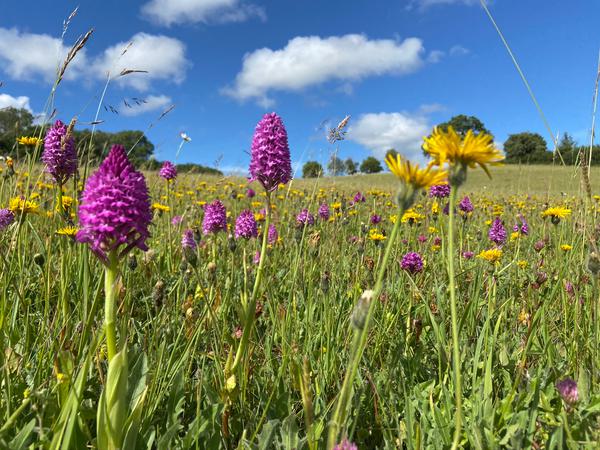United Nations World Wildlife Day 2025: Conservation Finance
The theme for this year's United Nations World Wildlife Day is Conservation Finance. Becs Hunt from the National Landscapes Association's Nature based Solutions team reflects on the practicalities.
Introduction
3 March is United Nations World Wildlife Day - this year’s theme is conservation finance.
That’s a pretty big deal, reflecting a monumental, global shift as we recognise the problems with Nature’s historical detachment from our economy, and begin to redefine how we think of and value the ecosystem services we’ve been drawing on freely since the dawn of human civilisation. It’s got us into a whole heap of trouble (cough – impending planetary collapse – cough), and now, it’s time to act.
Conservation finance vs traditional funding
So what’s different about conservation finance as opposed to funding in the traditional sense? We’ve always needed money to conserve and enhance – why is this suddenly the theme of an international awareness day?
In order to meet the twin climate and biodiversity crises, the environmental sector across the world has to mobilise at unprecedented speed and scale. It’s not just about conservation anymore. We need to conserve, restore, and safeguard nature for the future – building in resilience for an uncertain, changing climate. We need to halt and reverse the damage done, not just maintain the status quo (although that is a significant challenge in itself).
Conservation funding has been critical to the incredible work done by dedicated teams throughout the world and it remains a fundamental resource for a desperately underresourced sector. It is however, limited, and research has shown that when the money runs out, positive outcomes can unravel. To achieve the scale and pace required to halt and reverse the planetary crises, larger, longer-term reserves of cash are needed. We know that the nature funding gap is too large to fill with the public purse, so it’s time to turn to the private sector (also beneficiaries of all those free natural resources).
So conservation finance is about accessing new sources of funding in innovative ways. It might be cash from a corporate in a donation-style model, or some kind of repayable investment. What’s more common at the moment is a blend of different mechanisms, while we wait for the policy and regulations required to incentivise business buy-in.

How it’s working (or not) in practice
At this stage in the UK, businesses are not mandated to invest in (or pay for) nature outside of Biodiversity Net Gain and in some areas, Nutrient Neutrality. Everything is voluntary. Whilst things stay that way, we don’t expect a significant redirection of cashflows towards the environmental sector. Why would businesses pay when they don’t have to?
This is where the blended models come in; a combination of different funding mechanisms. The job remains: restore as much nature as possible, as well as possible, as soon as possible, while we wait for central shifts – namely the policy and regulation to really light the tinder box. So in the meantime, we beef up the available funding with innovative corporate partnerships and projects that might tick different boxes – for example, CSR or ESG. And we talk to the corporate partners that want to invest in and pay for nature on a voluntary basis, unpicking that journey and learning as much as we can.
Conservation finance is defining itself in real time. Nature is becoming an asset class, economists and ecologists are hashing it out, and exciting case studies are emerging that demonstrate the incredible creativity that happens when multi-disciplinary teams puzzle hard together. It’s still all to play for, and we have to ensure that nature comes out on top.
Where National Landscapes come in...
The National Landscapes may be the single greatest tool in the government’s belt when it comes to widespread, impactful nature recovery. Covering 20% of England, 25% of Northern Ireland and 4% of Wales they are, combined, the largest of the protected areas with the greatest collective might for delivering serious change at scale. And that’s before we mention the strengthened bonds with our National Parks and National Trails colleagues, expanding the work of all the protected landscapes beyond individual boundaries.
Increasing the funding for recovery in National Landscapes isn’t just about increasing cash for nature. It’s about financing long-term, collaborative, and strategic programmes of work which consult all the key and credible stakeholders in the UK. A step change is what’s needed for nature and people to thrive together, and at the National Landscapes Association, that’s the name of our game.
Interested in talking more about conservation finance?
Get in touch with the Nature-based Solutions team, browse our online showcase of investment-ready projects.



